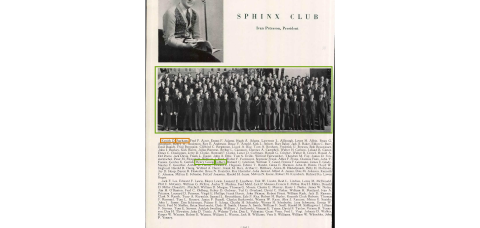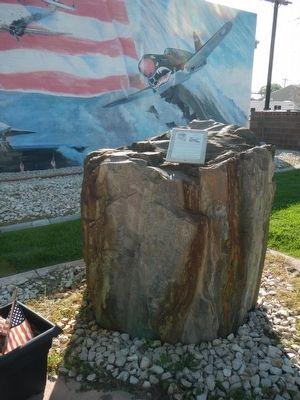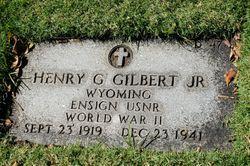Henry George Gilbert, Jr.
Pre-WSC Background
Henry George Gilbert, Jr. was born on September 23, 1919 in Temple, Cotton County, Oklahoma to Henry Gilbert, Sr. and Helen Tandy Gilbert. By the time Gilbert was three months old, he and his family were living at Fort Sherman in the Panama Canal Zone. Henry, Sr. worked as an Engineer in the Marine Division. A second son, John Robert Gilbert, was born on June 27, 1921 in Colon, Panama. After getting out of the military, the Gilberts moved to Lovell, Wyoming, where Henry, Sr. worked as a chief machinist for The Great Western Sugar Company.
Lovell is in Big Horn County, which takes up most of the northeastern part of the larger Bighorn Basin in the northwest region of Wyoming. Inhabited by the Crow Nation, or Absaroka, Euro-American settlement began in the region with the establishment of the Missouri Fur Company in 1823-24. Cattlemen later moved into the region beginning in the 1870s, followed by Mormon settlers in 1895. Lovell, in the norther part of Big Horn County near the confluence of the Shoshone and Big Horn rivers, began as a post office in 1888, then became a town around 1900. With the establishment of a rail line through all of Big Horn County, sugar beet growers were able to ship their product with more efficiency. The Great Western Sugar Company built their processing plant in Lovell in 1916. By 1940, Henry, Sr. worked as a Master Mechanic at the plant.
Gilbert graduated from Lovell High School in 1936. He attended New Mexico State University for the 1937 to 1938 academic year before transferring to Washington State College (WSC).
WSC Experience
Gilbert attended WSC from 1938 to 1940 as a General Studies major. He left his studies when he entered the Navy Air Corps as a flying cadet in March 1940.
Wartime Service and Death
Gilbert was commissioned an Ensign in the United States Naval Reserves. He joined the Flying Tigers, American Volunteer Group (AVG), as a Wingman; he was the youngest of the Flying Tigers at age twenty-two. The Flying Tigers were American volunteer pilots recruited by Claire L. Chennault, a retired U.S. Army Captain, to fight the Japanese in Burma (Myanmar) and China during 1941 and 1942. The P-40 fighters used by the Americans are recognizable for their painted shark faces on the nose of the planes. Few of the pilots had flown a P-40 before; it was an Army Air Corps plane, and for recruits who were used to flying big planes in the Navy, a small mistake could be fatal.
Japanese control over China’s ports and transportation system essentially cut off China’s Nationalist government from the outside world. The AVG initially consisted of 311 members and were organized within the Chinese air force and flew under the Republic of China flag. The small company of air fighters faced chronic shortages of fuel, parts, and pilots, yet they were able to score numerous victories over the larger and better-equipped Japanese air force. According to Tripp Alyn, chair of the Historical & Museums Committee AVG Flying Tigers Association, the Japanese referred to them as “gangsters” because they felt they didn’t fight fair. The group were thought of as mercenaries by some, but were “largely patriotic American officers who joined a covert operation to help keep China in the war.” They flew supplies as well as provided cover for the Burma Road, and on July 4, 1942 members of the unit who wished were absorbed into the U.S. 10th Air Force and became central to the China Air Task Force under the command of Chennault.
On December 23, 1941, two waves of Japanese bombers accompanied by fighters approached Mingaladon, Burma. Fourteen P-40’s and 16 Brewsters of the Royal Air Force (R.A.F.) went to meet the attack, including Ensign Gilbert. He “dived on one of the bomber formations, shooting out bursts and striking two of them but without hitting vital spots. In the attack, his P-40 was hit by a cannon shell and screamed out of the battle to crash into the jungle below. There had been no parachute, and Henry Gilbert was the first Flying Tiger to die in combat.”
Postwar Legacy
Gilbert is buried at the National Memorial Cemetery of the Pacific (Punchbowl), in Honolulu, Hawaii. He was survived by his parents and his brother, John. He is memorialized on the WSU Veterans Memorial as well as with a memorial marker in his hometown of Lovell, Wyoming. The Lovell memorial was dedicated on June 29, 1985.




